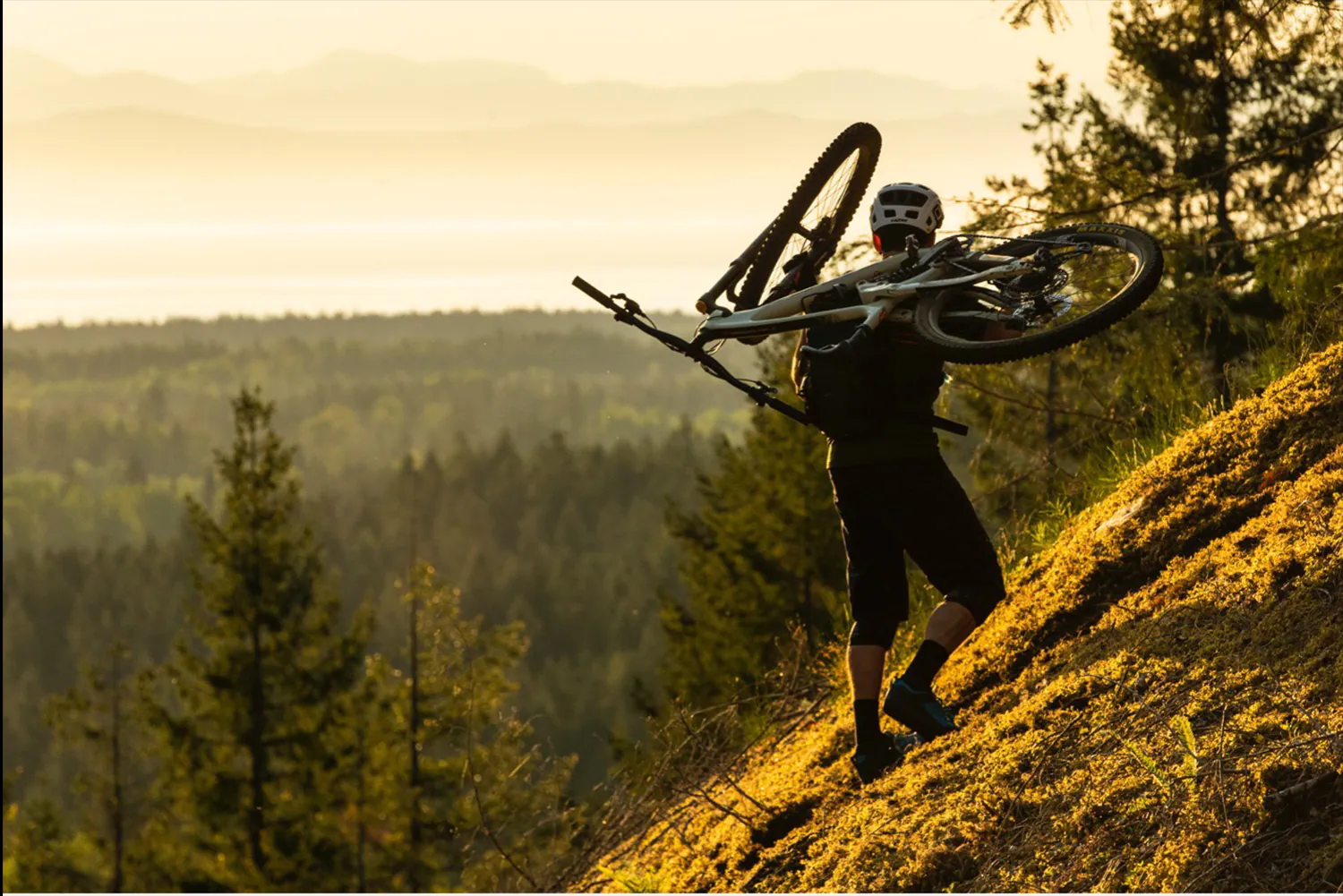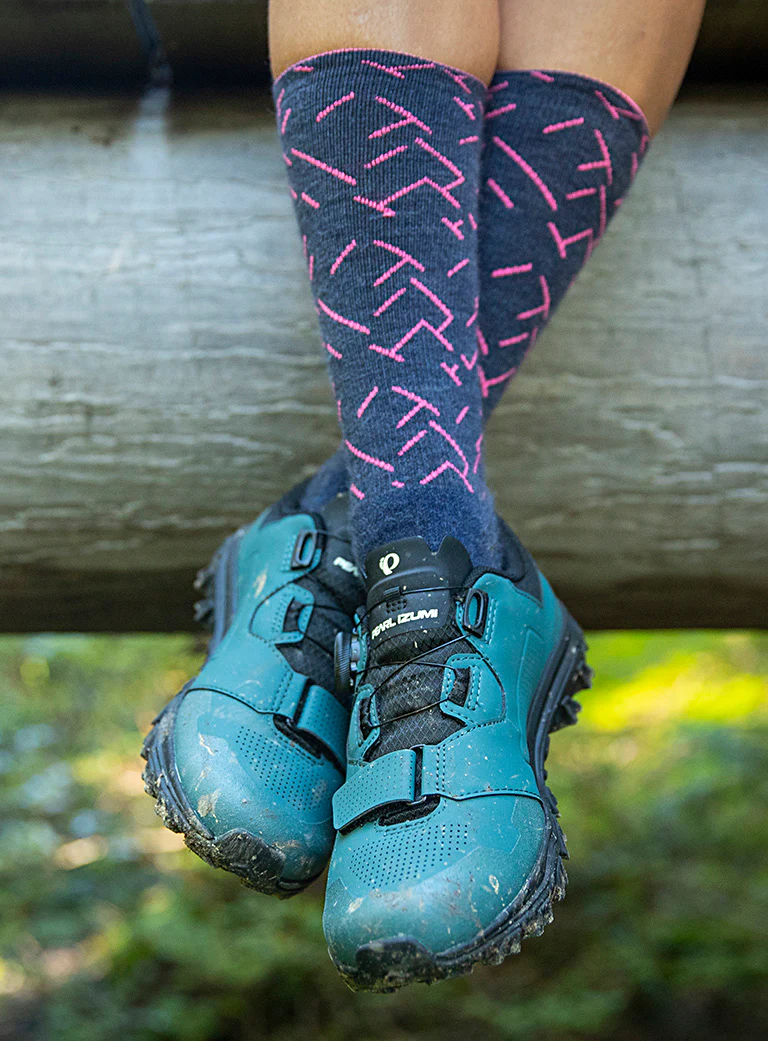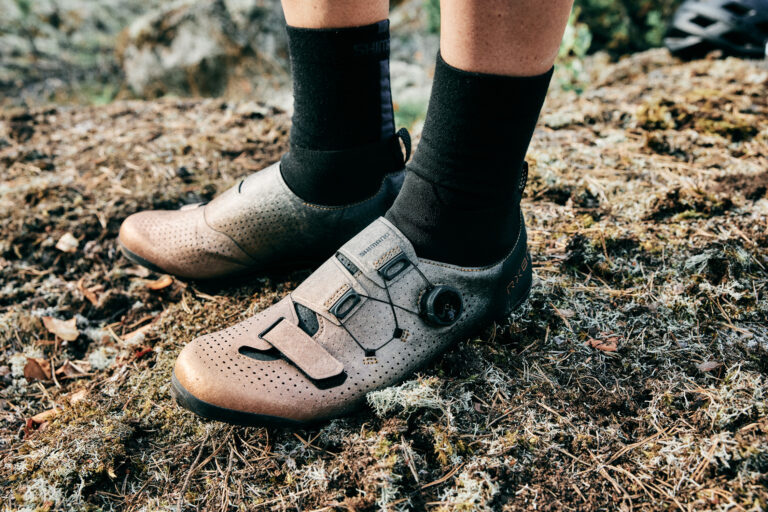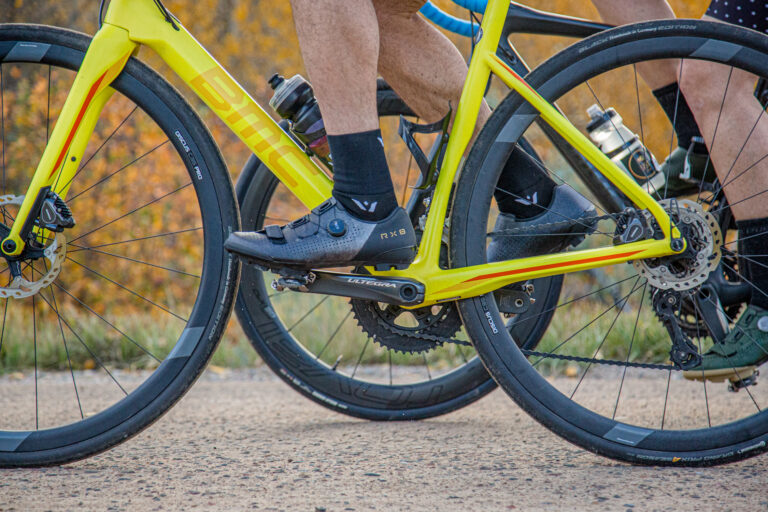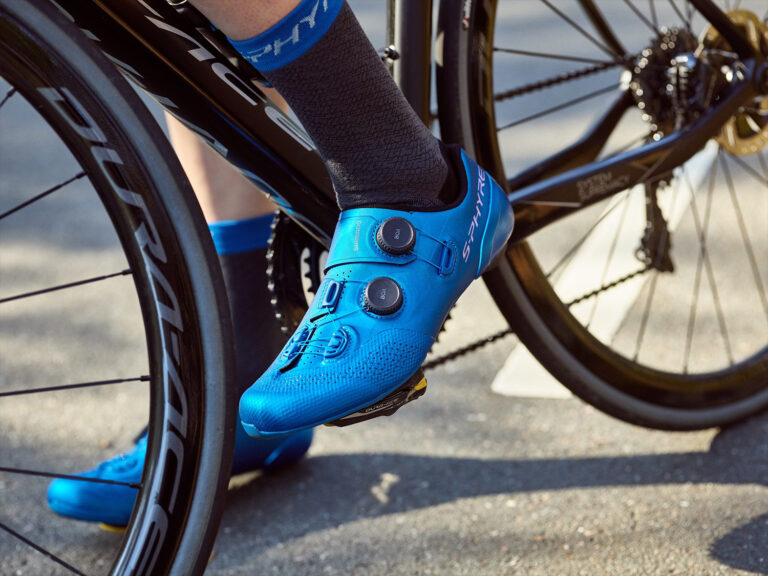Materials Used in Mountain Bike Shoes: A Guide from Experience

Key Point Summary of Materials Used in Mountain Bike Shoes:
- Materials Matter: The choice of materials in mountain bike shoes affects both durability and comfort.
- Upper Materials: A variety of materials are used, each offering different benefits. Synthetics are common for their durability and ease of cleaning, while natural materials like leather offer superior comfort and fit.
- Soles: The sole material plays a pivotal role in traction and power transfer. Rubber compounds are often used for grip, while carbon soles provide stiffness for efficient power transfer.
- Closure Systems: Different closure systems, like Velcro, laces, or dials, offer varying levels of adjustability and comfort.
- Comfort and Fit: Materials contribute to the overall comfort and fit of the shoe, impacting cycling performance.
Materials in Mountain Bike Shoes: A Guide from Experience
When you’re out on the trails, your shoes are more than just footwear—they’re your connection to the bike and the terrain. The right pair can make a huge difference in your ride.

Uppers: The Battle of Durability vs. Comfort
I remember my first pair of mountain bike shoes: rigid, unforgiving, but incredibly durable. They were made of a synthetic material that seemed indestructible. Synthetics, like polyurethane and nylon mesh, are staples in mountain bike shoe uppers. They withstand the elements and abrasions from rocks and vegetation.
However, as I progressed in my cycling journey, I found that natural materials like leather offer a level of comfort and adaptability that synthetics can’t match. Leather molds to your foot over time, creating a custom fit. The downside? It requires more care and isn’t as resistant to water and mud.
Soles: Where Rubber Meets the Trail
The sole is where your power transfers to the pedals, and it’s also your main point of contact when you’re off the bike. Early on, I used shoes with softer soles, which were comfortable but didn’t offer much in terms of pedal efficiency. Then I switched to shoes with stiffer soles, typically made from nylon or carbon fiber. These materials improve power transfer but can be less comfortable, especially on longer rides.
Rubber soles are another key aspect. Brands like Vibram offer soles with excellent grip, essential for those moments when you need to plant your foot on the trail. The tread pattern also plays a role in traction, something I learned the hard way on a slippery slope in the middle of a race.
Closure Systems: The Little Things That Matter
Mountain bike shoes come with various closure systems: Velcro straps, ratcheting buckles, laces, and even dial systems like the BOA. Each has its pros and cons. Velcro is quick and easy but might not offer the most precise fit. Laces provide a classic look and customizable fit but can be a hassle to adjust mid-ride. Dial systems offer a snug, adjustable fit but are usually found on pricier models.
I’ve had shoes with all these systems and found that the best choice depends on personal preference and riding style. On my gravel bike, I prefer the adjustability of dial systems, while on mountain trails, I lean towards the simplicity and reliability of Velcro or laces.
Breathability: Keeping Your Feet Fresh
An aspect I learned to value over time is breathability. Long rides in the summer can turn your shoes into mini saunas. That’s where materials like mesh panels come in. They allow air to circulate, keeping your feet cooler and reducing sweat – a savior in hot weather. Remember, comfortable feet are less prone to fatigue, and that can make a significant difference in your performance and enjoyment.
Water Resistance and Weather Adaptability
Mountain biking isn’t a fair-weather-only sport. I’ve pedaled through downpours and muddy tracks more times than I can count. Here’s where water-resistant materials come into play. Some shoes feature waterproof liners like Gore-Tex, which are invaluable in wet conditions. However, they can compromise breathability, so it’s a balance. Personally, I have a pair of water-resistant shoes for wet days and another more breathable pair for dry conditions.
Weight: The Unseen Factor
In cycling, every gram counts. Heavier shoes can contribute to rider fatigue, something I learned during a grueling mountain bike marathon. Lightweight materials like advanced synthetics and certain leathers can reduce shoe weight, making a noticeable difference in endurance events or long climbs.
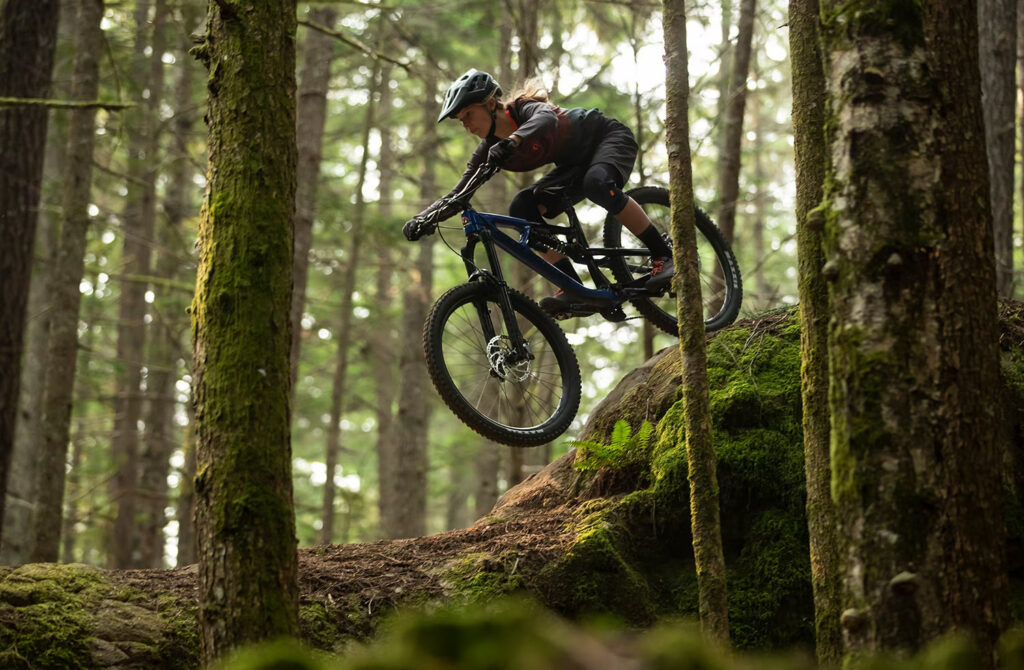
Environmental Impact and Sustainability
As an avid outdoor enthusiast, I’ve grown more conscious of the environmental impact of my gear. Many brands are now using sustainable materials, like recycled plastics or eco-friendly dyes, in their mountain bike shoes. While this might not directly affect performance, choosing environmentally responsible gear is something I find increasingly important.
Comfort and Fit: The Foundation of a Good Ride
No matter the materials, a shoe that doesn’t fit well is a recipe for discomfort. I’ve had my share of blisters and hot spots from ill-fitting shoes. A good mountain bike shoe should feel snug but not tight, with enough room to wiggle your toes.
The material of the insole also plays a significant role. Memory foam or gel can provide extra comfort, especially on longer rides. Some shoes even come with customizable insoles to match your foot’s arch.
Durability: The Long Haul
Mountain biking is tough on gear, and shoes are no exception. Durable materials like reinforced toe boxes and abrasion-resistant uppers help shoes withstand the rigors of off-road cycling. I’ve seen shoes fall apart after a few rough rides, while others have lasted seasons.
Wrapping Up: A Material Difference
The materials in your mountain bike shoes can greatly impact your riding experience. Durability, comfort, fit, and function all hinge on the choice of materials. As you gain more experience and refine your riding style, you’ll find what works best for you.
If you’re looking for recommendations or a summary of mountain bike shoe models that exemplify the qualities discussed in the article, here’s a brief list:
- For Durability and Synthetic Uppers: Look at models like the Shimano SH-ME7 or Specialized 2FO Cliplite. These shoes use robust synthetic materials that offer excellent durability and resistance to the elements.
- For Natural Material Comfort: The Giro Empire VR90 is an example that incorporates leather in its design, offering comfort and a personalized fit over time.
- For Stiff Soles and Power Transfer: Shoes like the Sidi Dragon 5 or Adidas Terrex Trail Cross SL feature stiff soles, often made from carbon fiber or hardened nylon, for efficient power transfer.
- For Rubber Soles with Grip: The Five Ten Freerider Pro is renowned for its rubber sole grip, using Stealth rubber compounds that provide excellent traction on and off the bike.
- For Various Closure Systems: Models such as the BOA-equipped Specialized S-Works Recon (dial system), Lake MXZ303 (laces), or Bontrager Foray (Velcro straps) showcase different closure systems available in mountain bike shoes.
- For Breathability: Shoes like the Scott MTB Comp Boa offer excellent breathability with their mesh panels, ideal for warmer climates.
- For Water Resistance: The Shimano MW7 is a great example of a water-resistant mountain bike shoe, offering protection in wet conditions.
- For Lightweight Design: The Specialized S-Works 7 MTB shoes are known for their lightweight yet durable construction.
Ultimately, the right mountain bike shoes are the ones that you don’t think about while riding. They just quietly do their job, letting you focus on the trail, the scenery, and the joy of riding. So take your time, try different options, and find the pair that fits not just your feet, but your riding style and needs.
Happy trails!
John

FAQ
What are mountain biking shoes made of?
Mountain biking shoes are typically made from a combination of materials, including:
- Synthetic Uppers: Often made from materials like polyurethane or nylon mesh for durability and resistance to elements.
- Leather: Used in some models for comfort and a customizable fit.
- Rubber Soles: For grip and traction on pedals and ground.
- Nylon or Carbon Fiber: Used in the sole for stiffness and efficient power transfer.
- Various Closure Systems: Including Velcro straps, laces, and dial systems like BOA for securing the shoe.
What is the best material for cycling shoes?
The best material for cycling shoes depends on the rider’s needs, but generally, a combination of synthetic materials for the uppers (like polyurethane or nylon mesh) and carbon fiber for the soles is highly regarded. This combination offers durability, lightweight, and efficient power transfer, making it suitable for many cycling disciplines.
What makes a good mountain bike shoe?
A good mountain bike shoe typically combines durability, comfort, efficient power transfer, good grip, and a secure fit. This often means rugged synthetic uppers, stiff soles (like carbon fiber or hardened nylon for pedaling efficiency), a grippy rubber outsole for off-bike traction, and a reliable closure system (like Velcro, laces, or BOA dials) for a snug fit.
What are the best shoes to wear when mountain biking?
The best shoes for mountain biking are those specifically designed for the sport, featuring durable construction, stiff soles for efficient power transfer, secure closure systems (like BOA dials, Velcro straps, or laces), and grippy rubber outsoles for traction. Popular choices include the Five Ten Freerider, Shimano SH-ME7, and Specialized 2FO Cliplite. The ideal choice depends on personal fit, riding style, and terrain.
